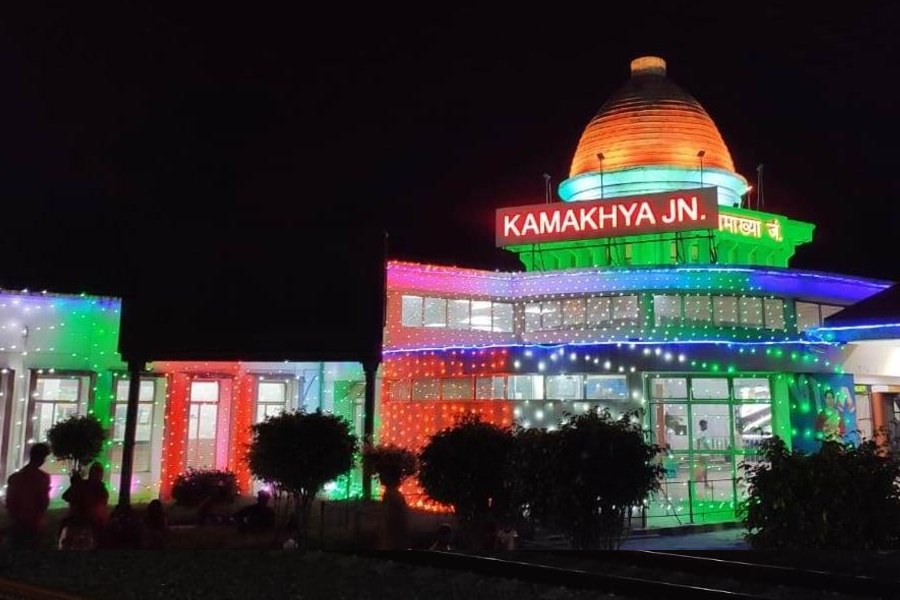
Bhubaneswar, Dec. 16: It's an irony of sorts - there is a complaint of non-performance against chief minister Naveen Patnaik's pet project e-Abhijoga, which was launched six years ago to ensure quick remedy to people's grievances.
Sources in the government said that the project, which was launched with much fanfare on July 31, 2010, had failed to achieve the desired results. On the day of the portal's launch, the chief minister had dramatically resolved the case of a 12-year-old Kalahandi boy suffering from liver disease. The moment Naveen learnt about the incident, he made an on-the-spot sanction of Rs 10,000 for the boy's treatment. The chief minister's action raised hope about the efficacy of the system, only to be proved wrong a few years later.
"With the introduction of the e-Abhijoga, people were expected to get justice sitting at home. But the data received by us reveals that the number of cases disposed of is quite low," said a government official on conditions of anonymity.
Officials sources revealed that till November, all the 41 government departments taken together had received 35,911 grievances, but more than 15,000 cases are yet to be disposed of.
In the case of some departments, the disposal rate is as low as 30 per cent, while the worst performer happens to be the law department as it has resolved only 0.99 per cent cases.
"The law department has received 202 cases, but disposed of only two cases so far," said a senior official.
Speaking to The Telegraph, additional secretary, law, and in-charge of e-Abhijoga, Rashmi Ranjan Acharya, said: "I have taken charge recently. I will focus on quick disposal of cases."
The performance of other departments is not too impressive either. The skill development and technical education department has a poor record in redressing grievances. It has so far resolved 14.7 per cent grievances, while the school and mass education department's score is 25.03 per cent. The performance of the planning and convergence department is slightly better at 29.01 per cent. The best performer, however, is the pension grievance and pension administration department, which has solved 98.53 per cent cases and is closely followed by the commerce and transport department that has disposed of 96.97 per cent complaints.
It is not that technicalities of lodging a complaint have led to the low success rate of the project. To lodge a complaint, one has to log on to the e-Abhijoga portal and mention the grievance and the department concerned. Each department has officials tracking the complaints and are expected to respond to them.
"People are lodging complaints, but they are yet to get results. From my experience I have seen that the movement of files takes about three years," said Raja Prasad Mohanty, 46, who had to run to the state secretariat for nearly three years to settle the pension case of his sister.
Naveen's other dream project Odisha secretariat workflow automation system (OSWAS) has also failed to make an impact in its six years of existence. The project seeks to bring efficiency and effectiveness in the functioning of the secretariat. The comptroller and auditor general (CAG) in its report, which was tabled in the recently concluded Assembly session, states: "Even after six years of implementation, all envisaged core, common and department specific applications of OSWAS could not be developed."
The report states that the management of the OSWAS is weak. "Business process re-engineering was not conducted that created inefficiencies and inconsistencies in file management. Business continuity and disaster recovery plan was not framed. Odisha Computer Application Centre could not exercise adequate control over database administration activities," the report said.
What is significant is that the digital signature introduced by the state government failed to protect the integrity of notes created though the OSWAS.
"The integrity of digitally signed documents, thus, became doubtful as DBA (data base administration) log was also not maintained and other transaction logs were tampered with," said the report. Out of 9,22,275 files created in OSWAS, only 38,387 were digitally signed.
Coming down heavily on the state government, the CAG said: "The OSWAS had design deficiencies like incomplete administrator inefficiencies, ineffective session management, inconsistencies in reports and time-stamping."
The CAG has also pointed out that government employees are not ready to use the automation system.
"Usage of OSWAS was low, as 81 per cent of departments had created more than 50 per cent of files in physical form outside OSWAS. Training to users on core and common applications was inadequate," the report said.











